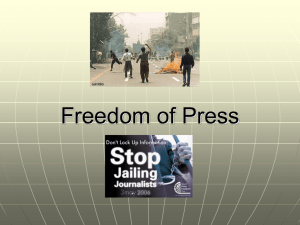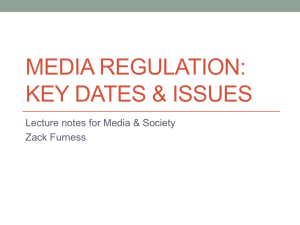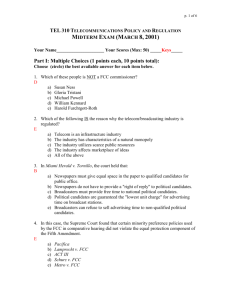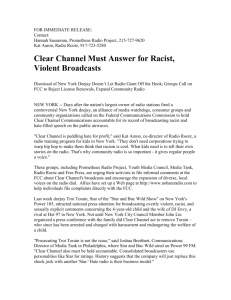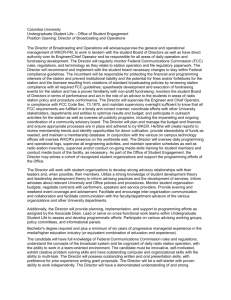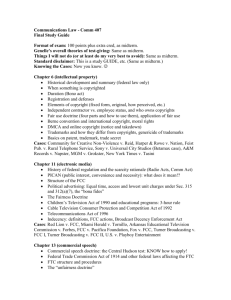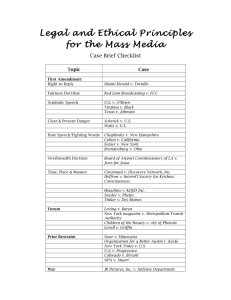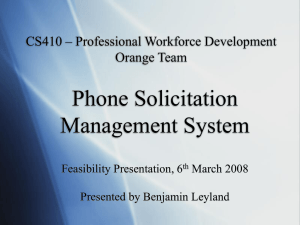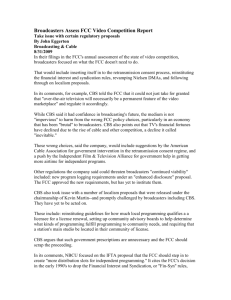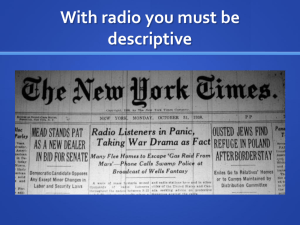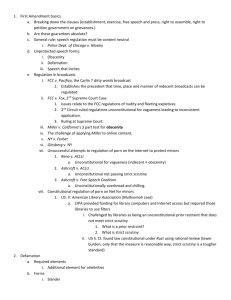EM 101 - 3
advertisement
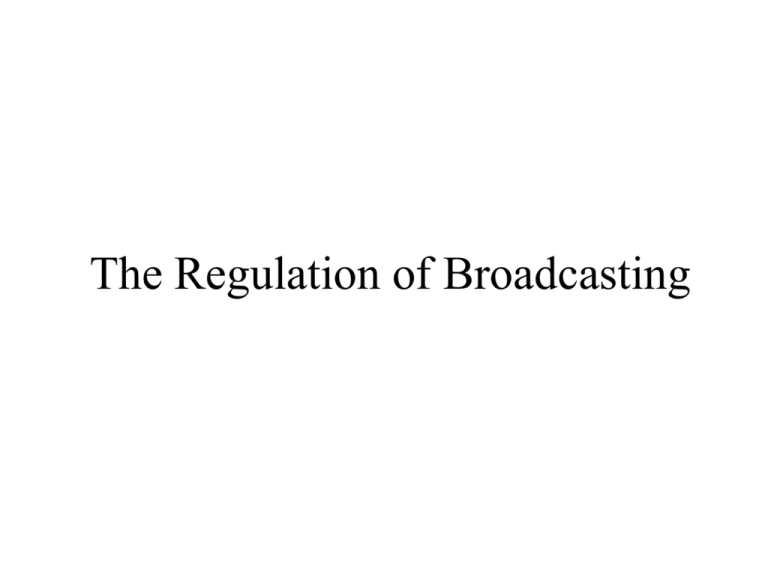
The Regulation of Broadcasting Early Regulations • The Wireless Ship Act of 1910 – Required ships to have wireless under certain circumstances • Radio Act of 1912 – Reaction to the Titanic disaster in 1912 – Ratified by 29 nations – Eliminated the Marconi rule of not communicating with non-Marconi ships. Early Regulations • The Radio Act of 1912 marks first use of the word radio to describe wireless. • Still not broadcasting. Still only refers to point-to-point communication. Early Regulations • Radio Act of 1927 – Response to chaos on the airwaves – Gave broadcasters “freedom of speech” – Established the Federal Radio Commission • 5 commissioners – Established the concept of “public interest, convenience and necessity.” • Phrase borrowed from the Railroad Act Early Regulations • The R.A. 1927 – Established the authority of the government (FRC) to regulate broadcast content and technical specifications The Communications Act of 1934 • Note change to “communications” from “radio” • Created the Federal Communications Commission – 7 commissioners – now back to 5 • Established and expanded the FCC powers • Based on many principles from the R.A. ‘27 The FCC • Bureaus Consumer & Governmental Affairs Enforcement International Media Wireless Telecommunications Wireline Competition The FCC • Offices Communications Business Opportunities Engineering & Technology General Counsel Inspector General Legislative Affairs Managing Director Media Relations Secretary Strategic Planning & Policy Analysis Workplace Diversity The FCC • Regulation by raised eyebrow • Forfeitures • Suspensions and revocations The FCC Steps in Licensing Channel search and assignment Engineering studies Community Ascertainment of Needs Construction Permit Temporary Operations – Proofs of Performance Full time license The FCC • Public Inspection files – Correspondence – License – Public affairs programming • Operating in the PICON Section 315 • Equal Time • Candidates for public office • If the station sells commercial time to one candidate, it must sell time to all candidates for the same office at the same price. • Lowest unit rate Exceptions to Section 315 • Bona fide – – – – Newscasts News interviews On-the-spot coverage Documentaries Section 312 • Must sell time to candidates for Federal Offices. • Then all of 315 applies Personal Attack Rule • If a candidate personally attacks (libels) another candidateStation must notify the libeled candidate Provide tape and transcript Provide opportunity to respond Fairness Doctrine • Broadcasters have an obligation to provide fair and balanced coverage of controversial issues of importance to the community. • Never codified – NAB successfully lobbies to keep it out of the books Obscenity • Differences between obscenity, indecency and profanity • Covered under Section 326 of the United States Code (not the Communications Act) Obscenity • Because broadcasting is obtrusive – coming into your home uninvited. • Because the public owns the airwaves. • Because broadcasters are trustees of the airwaves and must operate in the PICON Obscenity • The Miller Standard – Would the average person, applying contemporary community standards, find the work patently offensive? – Does the work, taken as a whole, appeal to prurient interests? – Does the work lack legitimate artistic, literary or scientific value? Conditional Freedom of Speech • Not on the air! • Must be true. • Fair comment. – People in the public light.
